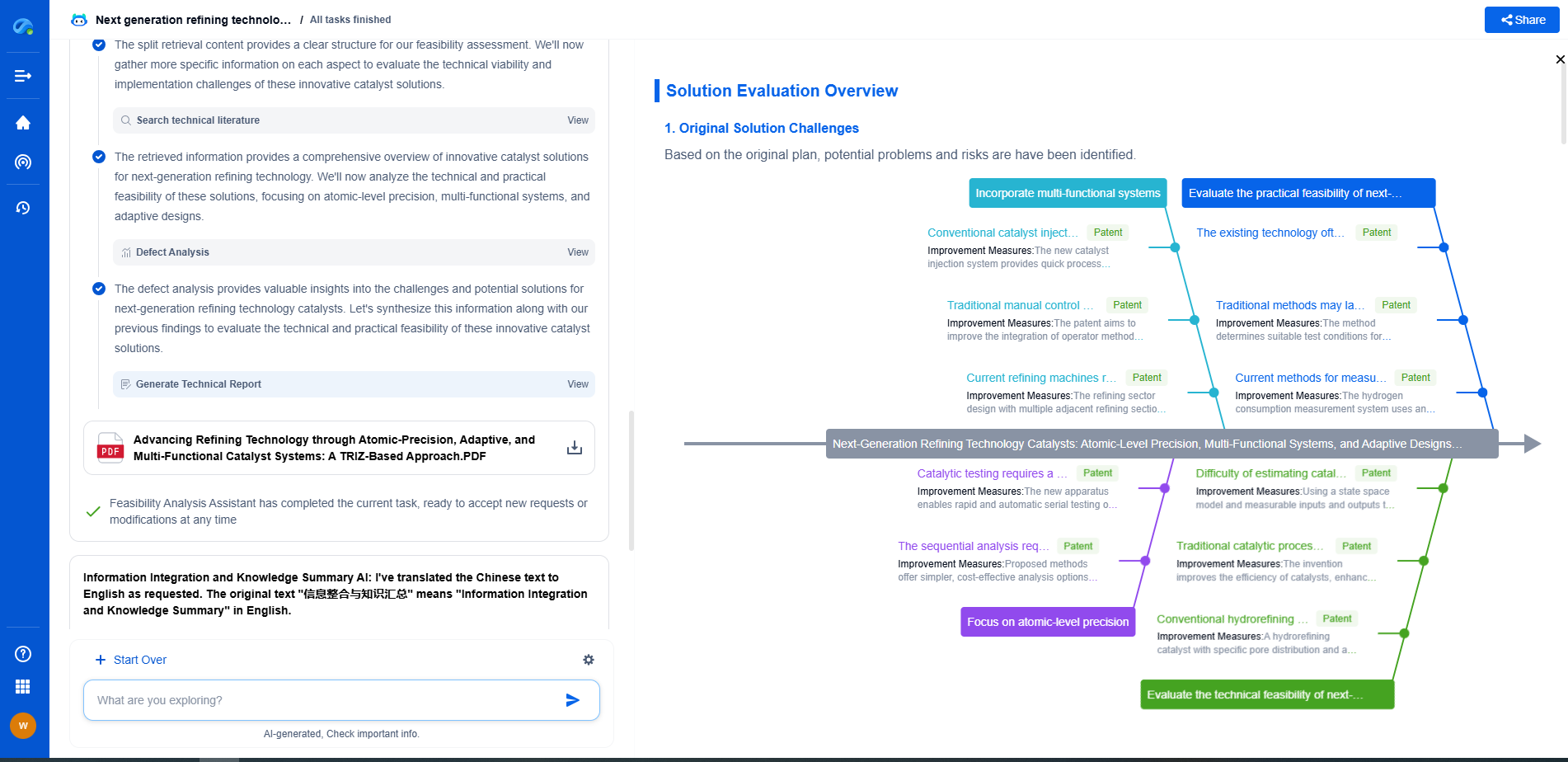How integrating spheres enable accurate light source characterization
JUL 15, 2025 |
In the world of light measurement, achieving accurate and reliable results is paramount for researchers and engineers alike. One essential tool that has significantly enhanced the precision of light source characterization is the integrating sphere. Whether in the development of LED technologies, improvement of optical materials, or environmental monitoring, integrating spheres play a crucial role in measuring the properties of light sources with unmatched accuracy.
Understanding the Integrating Sphere
An integrating sphere is a hollow spherical cavity with its interior coated with a highly reflective, diffuse white material. This design ensures that light entering the sphere is uniformly scattered and re-emitted across the entire surface area. Due to this scattering, the light is effectively homogenized, allowing for precise measurements of various light parameters. The geometry and material of the sphere are critical, as they minimize light loss and ensure that the measurements are not influenced by the directionality or intensity of the incoming light.
Key Applications of Integrating Spheres
1. **Measurement of Luminous Flux**
The integrating sphere is widely used to measure the total luminous flux of a light source, which represents the perceived power of light. Unlike other methods that may only capture light in a specific direction, the integrating sphere captures light from all angles, resulting in a comprehensive measurement of a light source's output. This capability is particularly valuable for manufacturers of lighting products who require precise luminous flux data to meet industry standards and consumer expectations.
2. **Spectral Analysis**
By coupling an integrating sphere with a spectrometer, detailed spectral analysis of a light source can be obtained. This combination allows for the evaluation of spectral power distribution, color temperature, and color rendering index, which are crucial parameters in determining the quality and application suitability of lighting systems. The integrating sphere ensures that the light's spectral characteristics are measured without any directional bias, providing accurate and repeatable results.
3. **Reflection and Transmission Measurements**
Integrating spheres are also instrumental in assessing the reflective and transmissive properties of materials. When light impinges on a sample, the integrating sphere can measure the proportion of light that is reflected or transmitted. This information is vital in industries such as coatings, textiles, and solar energy, where understanding how materials interact with light can lead to the development of more efficient products.
Advantages of Using Integrating Spheres
The principal advantage of integrating spheres lies in their ability to mitigate the effects of measurement errors caused by spatial variations in light. This makes them invaluable in applications where precision is critical. Additionally, the versatility of integrating spheres allows them to be used with different light sources and detectors, offering a wide range of measurement capabilities from ultraviolet to infrared wavelengths.
Moreover, integrating spheres provide a non-destructive means of testing, an important factor when working with delicate or expensive samples. The quick and efficient setup of integrating spheres also enhances their practicality in busy laboratory environments, reducing the time and complexity involved in obtaining accurate measurements.
Conclusion
Integrating spheres have revolutionized the field of light source characterization by providing a reliable and accurate method for measuring various light parameters. Their ability to homogenize light and eliminate directional bias is unmatched, making them an indispensable tool in both industrial and research settings. As technology continues to advance, the role of integrating spheres in ensuring the quality and efficiency of light sources will only become more critical. By understanding and utilizing these powerful instruments, researchers and engineers can continue to push the boundaries of what is possible in light measurement and application.
From interferometers and spectroradiometers to laser displacement sensors and fiber optic probes, the field of optical measurement is evolving at light speed—driven by innovations in photonics, MEMS integration, and AI-enhanced signal processing.
With Patsnap Eureka, biomedical innovators can navigate cross-domain insights in optics, electronics, and biocompatible materials, while discovering IP trends across academic, clinical, and commercial datasets.
💡 Fuel your next breakthrough in optical health tech—start using Patsnap Eureka to unlock deep insights today.
- R&D
- Intellectual Property
- Life Sciences
- Materials
- Tech Scout
- Unparalleled Data Quality
- Higher Quality Content
- 60% Fewer Hallucinations
Browse by: Latest US Patents, China's latest patents, Technical Efficacy Thesaurus, Application Domain, Technology Topic, Popular Technical Reports.
© 2025 PatSnap. All rights reserved.Legal|Privacy policy|Modern Slavery Act Transparency Statement|Sitemap|About US| Contact US: help@patsnap.com

